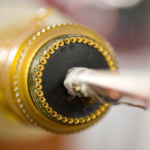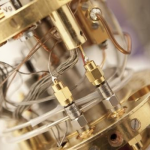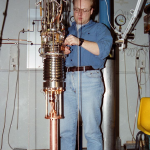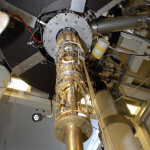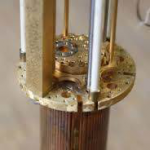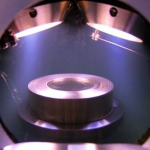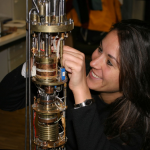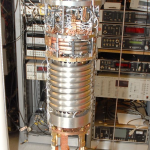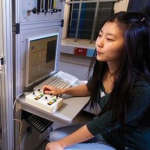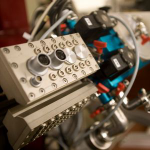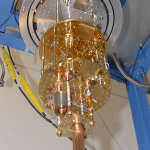

- Photon Transport in a Bose-Hubbard Chain of Superconducting Artificial Atoms
G. P. Fedorov et al., Phys. Rev. Lett. 126, 180503 (2021) - Path-Dependent Supercooling of the
He3 Superfluid A-B Transition
Dmytro Lotnyk et al., Phys. Rev. Lett. 126, 215301 (2021) - Superconductivity in an extreme strange metal
D. H. Nguyen et al., Nat Commun 12, 4341 (2021) - High-Q Silicon Nitride Drum Resonators Strongly Coupled to Gates
Xin Zhou et al., Nano Lett. 21, 5738-5744 (2021) - Measurement of the 229Th isomer energy with a magnetic micro-calorimeter
T. Sikorsky et al., Phys. Rev. Lett. 125 (2020) 142503
Multimode probing of superfluid 4He by tuning forks
A. Guthrie, R. P. Haley, A. Jennings, S. Kafanov, O. Kolosov, M. Mucientes, M. T. Noble, Yu. A. Pashkin, G. R. Pickett, V. Tsepelin, D. E. Zmeev, V. EfimovFlexural mode vibrations of miniature piezoelectric tuning forks (TFs) are known to be highly sensitive to superfluid excitations and quantum turbulence in 3He and 4He quantum fluids, as well as to the elastic properties of solid 4He, complementing studies by large scale torsional resonators. Here, we explore the sensitivity of a TF, capable of simultaneously operating in both the flexural and torsional modes, to excitations in the normal and superfluid 4He. The torsional mode is predominantly sensitive to shear forces at the sensor–fluid interface and much less sensitive to changes in the density of the surrounding fluid when compared to the flexural mode. Although we did not reach the critical velocity for the quantum turbulence onset in the torsional mode, due to its order of magnitude higher frequency and increased acoustic damping, the torsional mode was directly sensitive to fluid excitations, linked to quantum turbulence created by the flexural mode. The combination of two dissimilar modes in a single TF sensor can provide a means to study the details of elementary excitations in quantum liquids and at interfaces between solids and quantum fluid.
Appl. Phys. Lett. 115, 113103 (2019)
doi: 10.1063/1.5121023
arxiv: https://arxiv.org/abs/1908.07853
supplemental material: https://doi.org/10.17635/lancaster/researchdata/311
